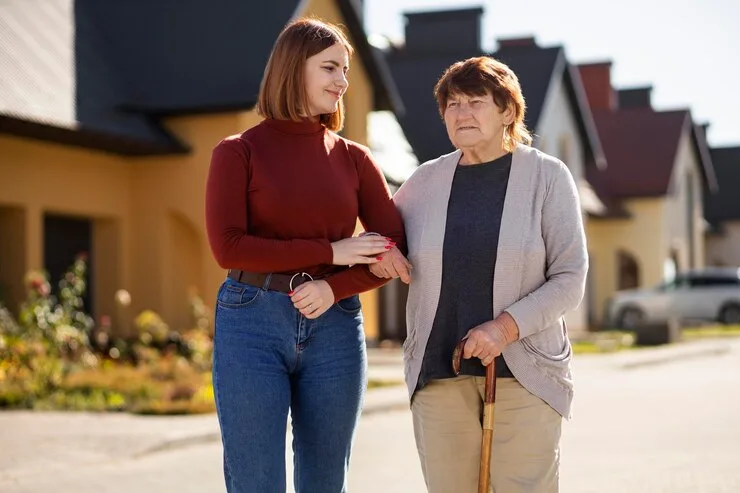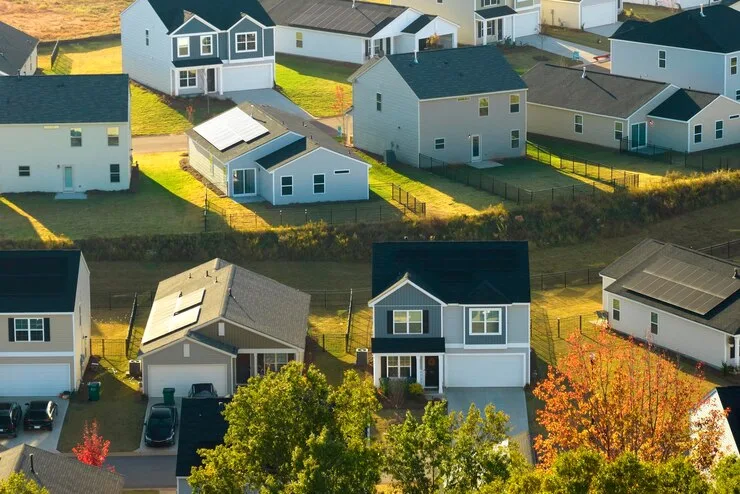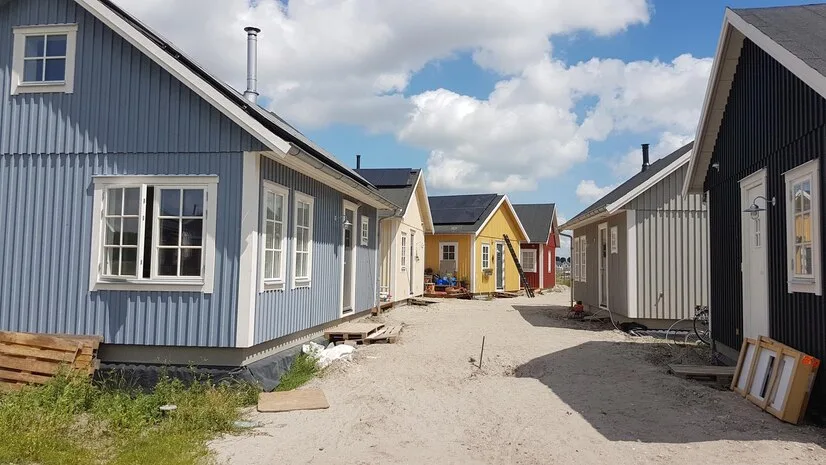
As the population continues to age and housing costs skyrocket, many families are turning to alternative living arrangements that provide both affordability and flexibility. One popular solution is the construction of granny flats, also known as accessory dwelling units (ADUs). These self-contained living spaces offer a range of benefits, from providing multigenerational living options to generating rental income.
In this article, we will explore what granny flats are, their advantages for multigenerational living and rental income, design options, legal considerations, financing options, steps to building one, tips for maximizing rental income, and real-life success stories. Whether you’re looking to create a comfortable living space for a loved one or an additional source of income, granny flats may be the perfect solution.
What are Granny Flats?
Granny flats are self-contained living spaces that are typically built on the same property as a main dwelling. They are designed to be fully functional, complete with a bedroom, bathroom, kitchen, and living area. While the name suggests that these units are intended for elderly family members, they can actually be used for a variety of purposes.
Granny flats can serve as a separate living space for adult children, provide a private space for guests, or be rented out for additional income. They are often smaller in size compared to the main dwelling, making them more affordable to build and maintain.
Benefits of Granny Flats for Multigenerational Living

One of the key advantages of granny flats is their suitability for multigenerational living. With housing costs on the rise, many families are finding it difficult to afford separate homes for each generation. Granny flats provide a cost-effective solution by allowing multiple generations to live on the same property while still maintaining their privacy and independence.
This arrangement not only fosters stronger family bonds but also provides convenience and support for aging parents or adult children. In addition, having family members nearby can help reduce the burden of caregiving and provide a sense of security.
Another benefit is the flexibility that granny flats offer. As family dynamics change over time, the use of the granny flat can be adapted accordingly. For example, if elderly parents move in initially, the space can later be repurposed for adult children or rented out when no longer needed for family use. This versatility makes granny flats a long-term investment that can adapt to changing family needs.
Granny flats also provide a sense of independence for both the occupants of the main dwelling and those in the ADU. While the units are located on the same property, they are separate living spaces, allowing each household to maintain their own routines and privacy. This balance between proximity and independence is a key advantage of multigenerational living in granny flats.
Benefits of Granny Flats for Rental Income
In addition to their advantages for multigenerational living, granny flats can also be a lucrative source of rental income. With the increasing demand for affordable housing, renting out a granny flat can provide a steady stream of income for homeowners. The separate entrance and self-contained nature of these units make them attractive to tenants who value privacy and independence.
Whether it’s a young professional looking for an affordable living space, a student seeking a quiet study environment, or a retiree downsizing from a larger home, granny flats appeal to a wide range of renters.
Furthermore, the construction of a granny flat can increase the overall value of the property. The added living space and potential for rental income make the property more desirable to potential buyers. This can be particularly beneficial when it comes time to sell, as the presence of a granny flat can help attract a larger pool of interested buyers and potentially increase the final sale price.
Another advantage of renting out a granny flat is the ability to offset the cost of the main dwelling. By generating rental income from the ADU, homeowners can reduce their own housing expenses, such as mortgage payments or maintenance costs. This can provide financial relief and increase overall housing affordability.
Granny Flat Design Options

When it comes to designing a granny flat, there are numerous options to suit different needs and preferences. The design can be customized to match the style and aesthetic of the main dwelling, or it can have its own distinct look. Some popular design options include:
- Attached or Detached: Granny flats can be attached to the main dwelling, sharing a wall or common area, or they can be completely detached, providing more privacy and independence.
- Studio or One-Bedroom: Depending on the available space and budget, granny flats can range from a simple studio layout to a one-bedroom unit with separate living and sleeping areas.
- Interior Design: The interior of the granny flat can be designed to maximize space and functionality. Built-in storage, efficient furniture, and open floor plans can help create a comfortable living environment.
- Outdoor Space: Depending on the size of the property, granny flats can have their own outdoor areas, such as a patio or garden, allowing for outdoor activities and relaxation.
By considering these design options, homeowners can create a granny flat that not only meets their specific needs but also enhances the overall appeal and functionality of the property.
Legal and Zoning Considerations for Granny Flats

Before embarking on the construction of a granny flat, it’s important to understand the legal and zoning considerations. Regulations regarding granny flats vary from one location to another, so it’s crucial to research and comply with the local laws and regulations. Some common considerations include:
- Zoning Restrictions: Local zoning laws may dictate whether or not a granny flat is allowed on a property. Some areas have specific zoning requirements for ADUs, such as minimum lot size or setback requirements.
- Building Permits: Depending on the size and scope of the project, building permits may be required. It’s important to consult with local building authorities to ensure compliance with the necessary permits and inspections.
- Occupancy Restrictions: Some areas have restrictions on the number of occupants allowed in a granny flat. This is typically based on the size of the unit and its compliance with local building codes.
- Accessory Use Agreements: Homeowners may be required to enter into an accessory use agreement, which outlines the permitted use of the granny flat and any restrictions or obligations associated with its operation.
By understanding and complying with the legal and zoning considerations, homeowners can avoid potential fines or legal issues and ensure a smooth construction process.
Financing Options for Building a Granny Flat
When it comes to financing the construction of a granny flat, homeowners have several options to consider. The most common financing options include:
- Cash: If homeowners have the necessary funds available, paying for the construction of a granny flat in cash is the simplest and most straightforward option. This eliminates the need to take out a loan or pay interest.
- Home Equity Loan: A home equity loan allows homeowners to borrow against the equity they have built up in their property. This can be a cost-effective way to finance the construction of a granny flat, as interest rates are often lower compared to other types of loans.
- Construction Loan: For homeowners who do not have sufficient equity or prefer not to use it, a construction loan can be obtained specifically for the purpose of building a granny flat. Most of the time, these loans have higher interest rates and shorter terms than standard mortgages.
- Personal Loan: Homeowners may also consider taking out a personal loan to finance the construction of a granny flat. This option can be more flexible, as personal loans can be used for any purpose and do not require collateral. However, the interest rates may be higher than with other types of loans.
Before making a choice, it’s important to carefully consider all of your financing choices, taking into account things like interest rates, repayment terms, and your ability to make payments. Consulting with a financial advisor or mortgage professional can help homeowners make an informed choice.
Steps to Building a Granny Flat

Building a granny flat involves several steps, from initial planning to final construction. Key process steps are:
- Research and Planning: Begin by researching local regulations, zoning restrictions, and building codes. Determine the desired size, design, and budget for the granny flat.
- Engage Professionals: Hire an architect or designer to create the plans for the granny flat. Engage the services of a builder or contractor to obtain quotes and oversee the construction process.
- Obtain Permits: Submit an application to local authorities for the required permits and approvals.This may include building permits, planning approvals, and accessory use agreements.
- Construction: Once the necessary permits are obtained, construction can begin. The builder or contractor will coordinate the various stages of the construction process, ensuring compliance with building codes and quality standards.
- Utilities and Services: Connect utilities such as water, electricity, and gas to the granny flat. Install heating, cooling, and other necessary systems.
- Interior Finishes: Complete the interior finishes, including flooring, cabinetry, plumbing fixtures, and electrical fittings. Paint the walls and install any necessary appliances.
- Final Inspections: Schedule final inspections with the local building authority to ensure compliance with regulations and obtain a certificate of occupancy.
By following these steps, homeowners can navigate the process of building a granny flat and ensure a successful and hassle-free construction experience.
Conclusion
Granny flats offer a flexible and cost-effective solution for multigenerational living and rental income. Whether you’re looking to provide a comfortable space for aging parents, accommodate adult children, or generate rental income, granny flats can meet your needs.
With a range of design options, legal considerations, financing options, and construction steps, homeowners can create a granny flat that enhances the overall value and functionality of their property. By maximizing rental income and leveraging the benefits of multigenerational living, granny flats provide a win-win solution for families seeking affordability, flexibility, and financial stability.
To learn more about building a granny flat and explore the possibilities for your property, contact Livermore ADU Builder & Room Addition. Our team of experienced professionals can guide you through the entire process, from design to construction, ensuring a successful and hassle-free experience.
Don’t miss out on the benefits that granny flats can offer – contact Livermore ADU Builder & Room Addition today!

